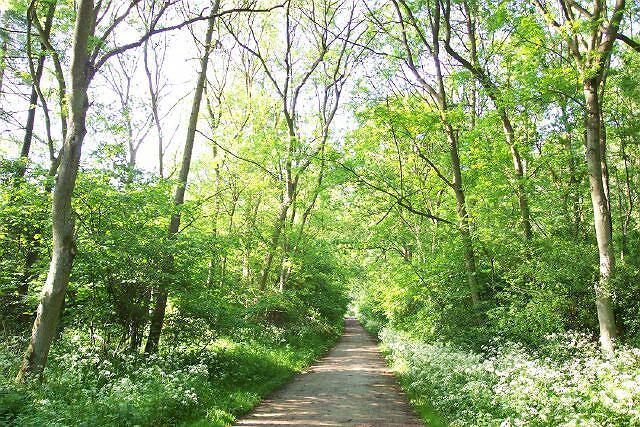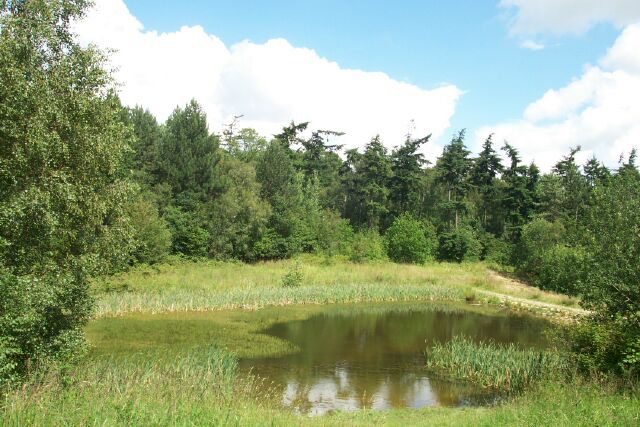|
THE AREA KNOWN AS Bourne Wood was originally part of the primaeval Brunswald Forest, now covering some 400 acres that have been owned by the Forestry Commission since 1926, and the area is managed for conservation as well as recreation and timber production. There has probably been continuous tree cover on this site for the last 8,000 years and the present trees are a mixture of broadleaf and conifer of all ages and their diversity has created ideal conditions for a wide range of wildlife. Many woodland plants have survived and so make the forest valuable in terms of wildlife conservation. The wild flowers than can be seen here in season include bluebells, primroses, wood anemone and nettle leaved bell flower while fallow deer are abundant and you may catch a glimpse of their smaller, shy cousin, the muntjac or barking deer.
Deep in the woods are two lakes which were made by damming a small dip in the landscape in 1972 and these have become watering holes for woodland inhabitants and home to ducks, herons, many aquatic animals and several species of fish. The pools are a mass of rushes and sedge, white water lilies float on the surface and yellow flag grows in the margins while fallow deer come to drink here in the evenings and early mornings and their hoof prints can often be seen in the soft mud at the water's edge. This is a marvellous sight if you are prepared to sit here until dusk or to get up at 4 a m on a summer's morning for a rendezvous with these graceful creatures. Other animals that can be seen in these glades are foxes, grey squirrels, owls, snakes, badgers and dormice and a wide variety of birds. Nightingales can be heard on summer nights and rare bats and dragonflies fly over the water at twilight. Bourne Wood is a wonderful amenity for the town, a place to visit and keep pace with the changing seasons. In spring, you will find cow parsley and May blossom along some of the paths while in summer, the greenery can be astoundingly bright after a spell of rain and sun and in the autumn, the woods take on a mellow, golden glow which is at its best in the morning sunlight. Winter too has its charm with dimly lit paths through the trees and undergrowth that waits for another spring. A comprehensive history of Bourne Wood with many photographs
showing Return to HOME PAGE MAIN INDEX
|

